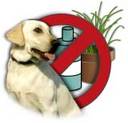Mar 21st 2016
How to avoid toxins in fabrics – and other products

How to avoid toxins in fabrics – and other products
Susan Lanham wrote to us: “I initially signed on to get this blog because I thought you would give practical ways to avoid these carcinogens. However, they are so pervasive, and there doesn’t seem to be any practical way to avoid them, so that reading your blog just makes me feel helpless and hopeless. More and more I just delete without reading: it’s like diagnosing a disease early when there is nothing to be done for it.”
Yikes. We certainly didn’t want to turn people off in despair! There is much you can do armed with a bit of knowledge.
We have always thought that information is the great motivator – that if people knew what they were buying, then they would demand changes in those products. Remember that each time you purchase something, you’re ensuring that the product you bought will keep being produced, in the same way. If you support new ideas, find that creative way to use something or insist that what you buy meets certain parameters, then new research will be done to meet consumer demand and new processes will be developed that don’t leave a legacy of destruction.
At least in theory, right?
The reality is that change takes a long time, and we’re living in a toxic soup now – so what can we do to protect ourselves right now?
And after all, just because almost anything can kill you doesn’t mean fabrics should. So here’s my list of things you can do to begin to protect yourself from toxins in fabrics:
- Buy only GOTS or Oeko Tex certified fabrics if you can – for everything, not just sheets and pajamas – starting now. If you can’t find GOTS or Oeko Tex certified fabrics, try to use 100% organic natural fibers. Certifications are a shorthand which allows us to accept that the certified products are safe, but if you want to get granular, you can find out what they’re certifying (i.e., what the certifications are telling you). Be sure to differentiate between, for example, a GOTS certified fiber and a GOTS certified fabric. Big difference: A product which uses GOTS certified fibers only may have been processed conventionally, which means it could be full of chemicals of concern.
- If it’s cheap, it probably has hidden costs, like your health or our ecosystem. It’s expensive to go against the flow, and natural fibers cost way more than synthetics, even though the price of crude is going up. So pay more, use less.
- Never buy anything made of PVC (polyvinyl chloride) or acrylic (which can be used as finishes or backings as well as fibers) and generally avoid other synthetics (such as polyester). They ALL start with toxic inputs (like ethylene glycol), but the profiles of both PVC and acrylic makes polyester look benign by comparison. In that same vein, avoid fabrics that are pretending to be something they’re not – polyester can be made to look like practically anything (one of the things we love about it), but it won’t have the characteristics of the natural fibers that make them such good choices for us.
- If you must use synthetic fibers, the best choice would be GRS Gold level recycled polyester. This new certification means that the recycled content really is 95-100%, with the added assurance that chemicals used in the manufacture abide by the GOTS standards (eliminating endocrine disrupting chemicals, heavy metals, and a long list of other chemicals of concern); water is treated and workers are given minimal rights.
- Never buy wrinkle-free or permanent-press anything and pass on any stain protection treatments. The wrinkle free finishes are formaldehyde resins, and there simply are no safe stain protection treatments.
- Fly less. (I never said these would be easy, but it’s good to know, right?) In this case my issue is not with the carbon footprint (which is tremendous) but because the fabrics are so drenched in flame retardants that people who fly often have elevated levels of PBDEs in their blood – and you already know that PBDEs and their ilk are to be avoided as much as possible. Same is true of fabrics on cruise ships.
- Trust your nose. If a fabric stinks, what does that tell you about it?
- Ask questions! If they can’t tell you what’s in it, you probably don’t want to live with it.
- Get involved and become informed! Force the federal government to fulfill its obligation to protect us from harm – join something (like a Stroller Brigade, sponsored by Safer Chemicals, Healthy Families or Washington Toxics Coalition, for example) and urge your representatives to support the Safe Chemicals Act. And share what you’ve learned. This is an evolving industry, and we’re all looking for answers. But I know you’re just ONE person – and the problems do seem overwhelming. Can just ONE person change the world? Margaret Meade said that committed people, banding together, is the only thing that ever has.
- Be aware of greenwashing. This doesn’t mean waiting for the perfect product but it does mean honesty in letting you (the consumer) know exactly what is in the fabric. If you see a green claim, Google the company name + environment and see what pops up. If it’s a big company, do they spend a significant portion of their R&D budget on green initiatives? What percent of their product offerings are “green” vs. “conventional”?
That does it for fabrics, but here are a few more things you can do to protect yourself :
- Take off your shoes in the house – simple and easy, and it prevents lots of pesticides and other chemicals from being tracked in.
- Vacuum and/or dust regularly –because the dust in our homes has been proven to contain lots of chemicals – wafted there from the other products in our homes.
- Filter your water. You’d be surprised to read the list of really bad chemicals found in most tapwater in the United States – if you’re interested, read the series called “Toxic Waters” which was published in the New York Times.
- Avoid polyurethane (i.e., poly foam, found in cushions and many other products) if you’re in the market for a new sofa or mattress, look for 100% natural – and certified – latex.
- Read the labels of your grooming products – avoid anything that includes the words “paraben” (often used as a suffix, as in methylparaben) or “phthalate” (listed as dibutyl and diethylhexyl or just “fragrance”). If there isn’t an ingredients list, log on to cosmeticsdatabase.com, a Web site devised by the Environmental Working Groupthat identifies the toxic ingredients of thousands of personal-care products.
- About plastics: Never use plastics in the microwave. Avoid “bad plastics” like PVC and anything with “vinyl” in its name. And don’t eat microwave popcorn, because the inside of a microwave popcorn bag is usually coated with a chemical that can migrate into the food when heated. It has been linked to cancer and birth defects in animals.
- As Michael Pollan says: “Eat food. Not too much. Mostly plants.” I’d add: eat organic as much as possible, support local farmers and don’t eat meat and fish every day. Grow an organic garden – one of the most powerful things you can do! If you can only purchase a few organic foods, there are lots of lists that tell you which are the most pesticide-laden.
- Replace cleaning products with non toxic alternatives – either commercially available cleaning products (avoiding ammonia, artificial dyes, detergents, aerosol propellants, sodium hypochlorite, lye, fluorescent brighteners, chlorine or artificial fragrances) or homemade. You probably can do most cleaning with a few simple ingredients like baking soda, lemon juice and distilled white vinegar. Lots of web sites offer recipes for different cleaners – I like essential oils (such as lavender, lemongrass, sweet orange, peppermint, cedar wood and ylang-ylang) in a bucket of soap and hot water. It can clean most floors and surfaces and it won’t kill me.
- And now that we mention it, avoid using any product which lists “fragrance” as an ingredient.
I know that even that is a daunting list – it’s really hard to avoid some products and growing an organic garden just isn’t in the cards for some of us. But if you do even some of these things your health – and ours! – will benefit. Not to mention all the living things on Earth which depend on our good stewardship of this planet.
